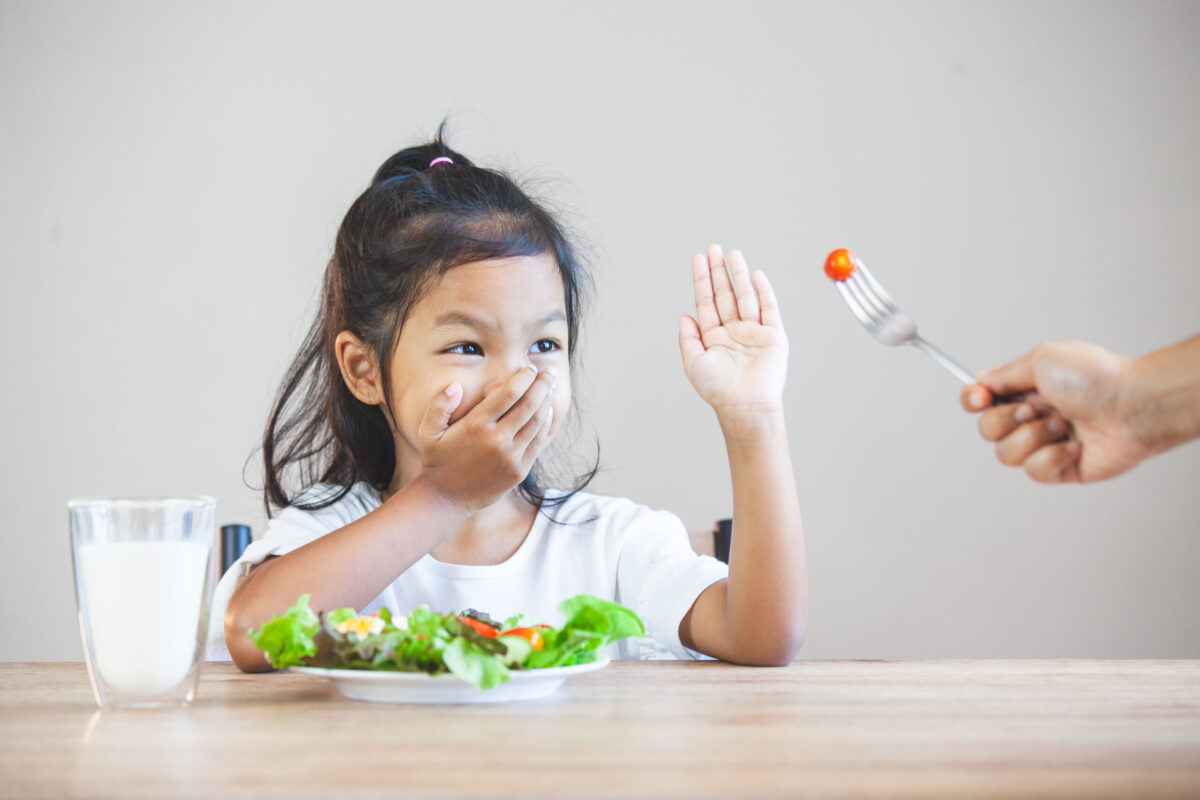There are countless benefits to following healthy eating habits. With a balanced diet, adults and teens alike can avoid that “post-lunch crash,” that makes working or studying hard, while kids who consume nutritional meals can keep up with their peers developmentally and physically.
However, researchers are still learning how humans develop eating habits and how the habits formed as kids can impact pre-teens, teens, and adults. The more studies they conduct, the earlier child eating habits seem to form. Let’s explore the science behind what we eat and how it affects kids of all ages.
Kids Develop Healthy Eating Habits From an Early Age
Consider how your own eating habits developed from a child to a teen and adult. What foods were you drawn to as you grew more independent and could shop for yourself or make your own meals? While it is widely accepted that parents play a significant role in what their kids eat and when, the development of healthy eating habits might start earlier than most people think.
According to the Encyclopedia of Early Childhood Development, “exposure to fruits and vegetables in infancy and toddlerhood have been associated with acceptance of these foods at later ages.” Additionally, child development experts have found that child food preferences start to form during the first two years of life – right as your child is able to eat solid food and feed themselves.
Even peer pressure can become an important factor in your child’s life by the time they are old enough to attend daycare. One study, published in Child Development, involved placing pre-school age kids as young as two next to their peers at mealtime. If a child with a strong dislike of a vegetable sat with kids who liked it, they were more likely to try the vegetable, change their mind, and eventually state their preference for it.
This doesn’t mean that kids need to enjoy complex foods or choose between fruit and cookies by the time they can walk. However, it does mean that having access to nutritional items and exposing kids to a healthy diet when they are first teething can set them up to make healthy choices through their adolescence and beyond.
Understanding The Connection Between Obesity and Malnutrition
Access is an important word when talking about child eating habits. When kids have access to healthy, nutritious foods at a young age, they are more likely to opt for those choices as they grow. However, not every child has a fruit bowl stocked with fresh produce or a vegetable drawer with leafy greens. However, this doesn’t necessarily mean the refrigerator is empty.
Food experts are starting to realize that levels of food consumption don’t necessarily correlate to nutrition levels. Undernourishment in modern America (and multiple other countries) often means higher calorie consumption – just with low-nutrient foods. It’s time to challenge the idea that an undernourished or food insecure child is also underweight.
“We can no longer characterize countries as low-income and undernourished, or high-income and only concerned with obesity,” Francesco Branca, Director of the Department of Nutrition for Health and Development at the World Health Organization, tells NPR. “All forms of malnutrition have a common denominator: food systems that fail to provide all people with healthy, safe, affordable and sustainable diets.”
Both overweight and underweight kids can be malnourished. Overweight kids may be taking in calories, but they are eating primarily processed foods with high sugar and carbohydrate levels and with fewer nutrients. This concept has caused organizations like UNICEF to use the term “Hidden Hunger” or when a child doesn’t get enough essential vitamins and minerals to live a healthy life.
Additionally, the organization has started to use the phrase “Food Swamp,” alongside the concept of a “Food Desert.” While a food desert is an area with few or no healthy choices, a food swamp is an area where there are more fast food and junk food options than healthy alternatives.
Poor Nutrition Impacts Kids in a Variety of Ways
Malnutrition can affect kids both physically and mentally. Physically, malnutrition can increase obesity rates and cause additional health problems like Type 2 diabetes. Mentally, kids may have a more difficult time in school if they are trying to learn on a poor diet.
According to the CDC (as reported by SF Gate), a poor diet can lead to lower grades, while a lack of nutritious foods has been correlated with higher rates of absenteeism, tardiness, and poor academic performance. This means that a lack of access to healthy foods can hold a child back during their most important academic years. Students struggling in school at a young age can also cause them to form a toxic relationship with learning, which drives them away from studying as they get older.
Both the physical and mental effects of a poor diet at a young age can stick with kids as they grow into adults.
How Family Resources Provides Nutritious Meals for Kids
At Family Resources, we believe that kids who start the day with nutritional meals have the best possible chances of success. This is why we participate in the Child Care Food Program (CCFP) through the Florida Department of Health. Through this program, enrolled licensed family child care providers are reimbursed for providing nutritious, well-balanced meals to the kids they watch over. These kids typically eat breakfast and lunch with the childcare provider, ensuring they receive at least two healthy meals each day.
With the CCFP, young kids can develop healthy eating habits that will stick with them throughout their lives. They are also exposed to a variety of different foods and new flavors that they otherwise couldn’t experience.
Family Resources is proud to support local daycare providers in the area by participating in the CCFP. In 2020, we served more than 941,462 nutritious meals through 340 in-home daycare providers. These efforts make sure thousands of kids have access to regular meals and can avoid falling into the malnutrition or “hidden hunger” categories.
Support Healthy Child Development in Your Community
It’s hard to tell when a child or teenager is homeless or has an unsafe living situation. It’s even harder to tell when a child isn’t getting the nutrition they need. A student you encounter in school or a friend of your kids might seem like they have enough food, but they could lack access to healthy meal options and fresh fruits and vegetables.
By understanding what malnutrition looks like and by taking steps to bring healthy foods to your community, you can become part of the solution and set the next generation of kids up for healthier, happier lifestyles.
Thank you for your continued support of Family Resources. Each donation to our cause helps us protect kids and teens in our area while expanding the Child Care Food Program across the county and beyond.


